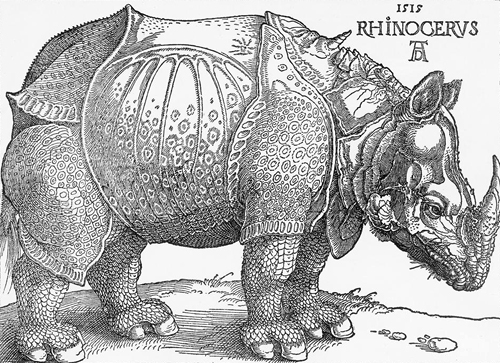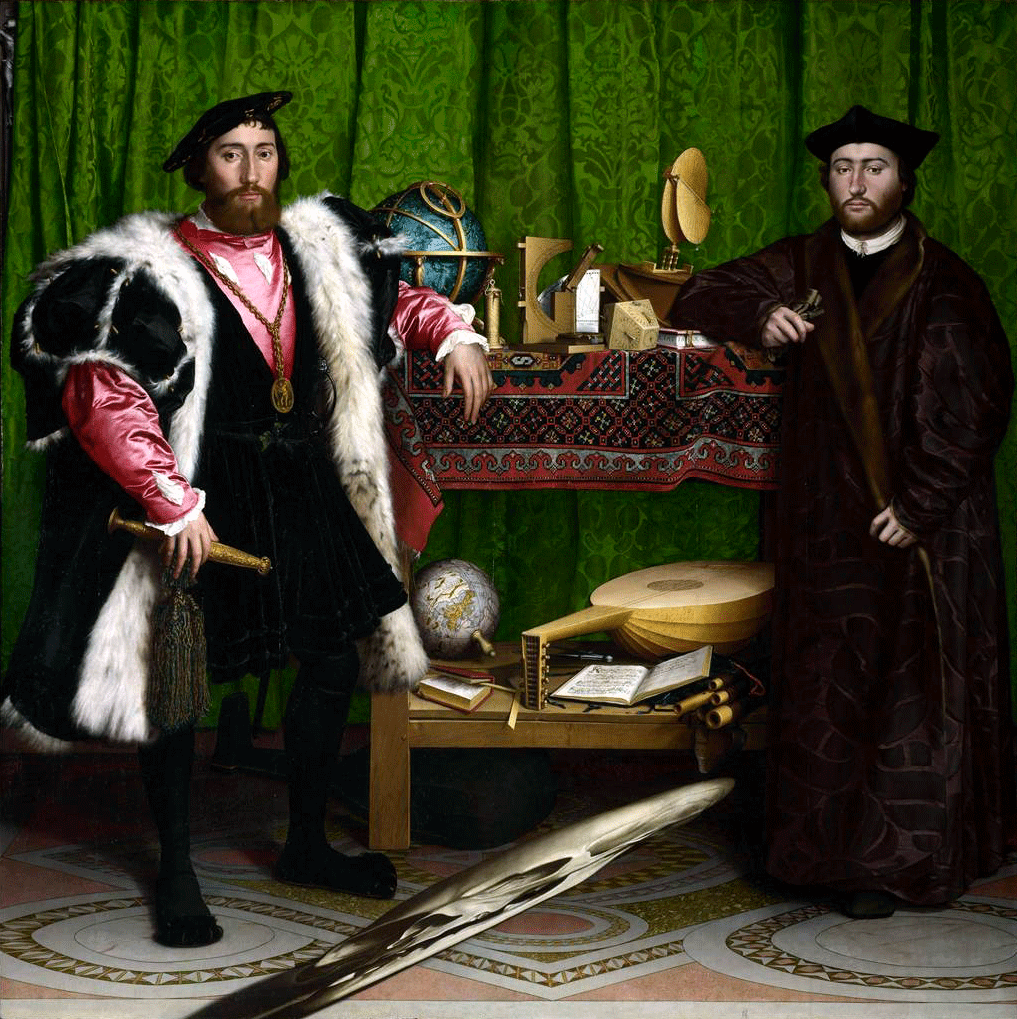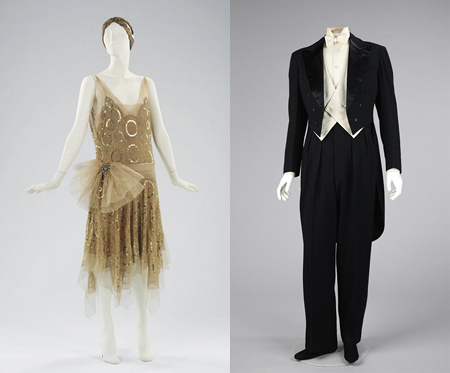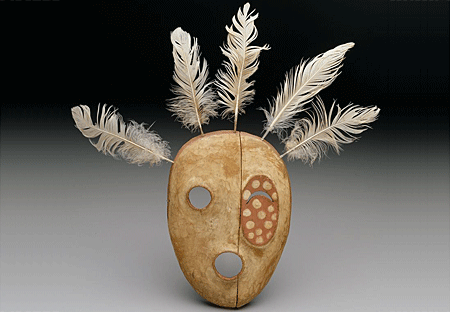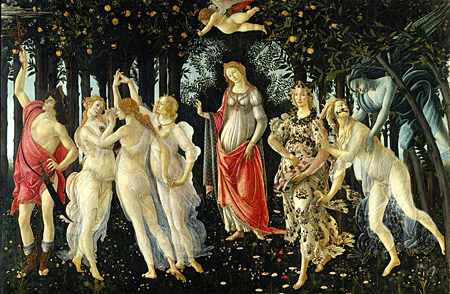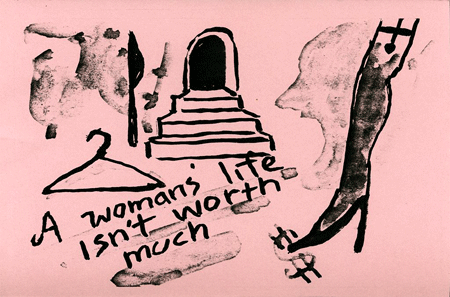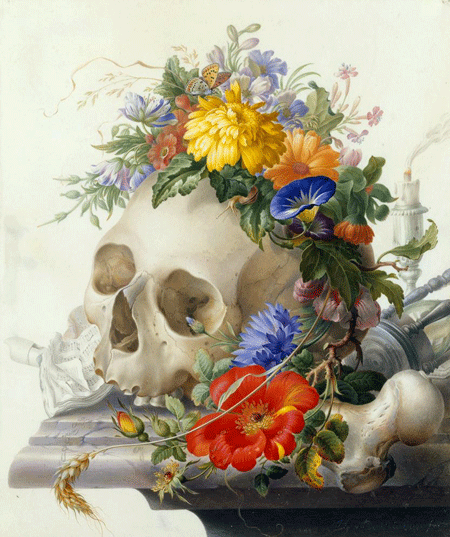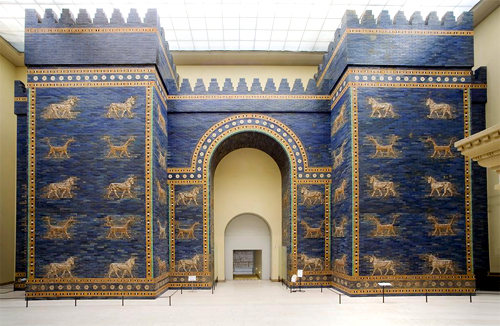
Neo-Babylonian | Ishtar Gate | 604-562 BCE | Berlin State Museum | Vorderasiatisches Museum, Staatliche Museen zu Berlin | Image and original data provided by Bildarchiv Preussischer Kulturbesitz; bpkgate.picturemaxx.com/webgate_cms
Travelers to ancient Babylon were met with an astonishing sight: a gate nearly 50 feet high and 100 feet wide made of jewel-like blue glazed bricks and adorned with bas-relief dragons and young bulls. Dedicated to Ishtar, goddess of fertility, love, and war, the main entrance to the city was constructed for King Nebuchadnezzar II circa 575 BCE.
